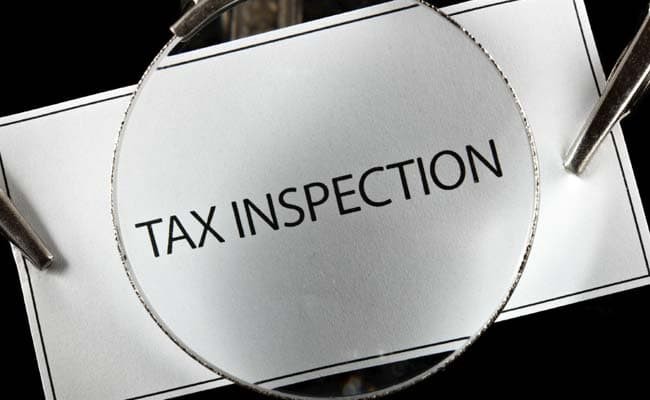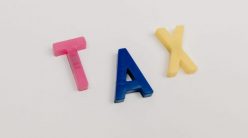Accountants always feel anxious whenever there is an inspection by the tax agency. So what do businesses need to prepare for the inspection to go smoothly? In the following article, DHPLAW would like to send to our readers and customers the preparation work when there is an inspection by the tax agency.

- CHECK THE REPORTS
- Regarding tax reports:
Double check that the tax reports are correct and correct. If not, make an adjustment and supplement report.
1.1 With VAT :
– Sort 12 months/year & compare book 1331 of that year with data on tax return.
– Check whether invoices over 20 million are fully eligible for VAT deduction.
1.2 With the CIT Finalization declaration:
Check if the Revenue/Expense on the tax return matches the books.
1.3 With the PIT finalization declaration:
– Check the data on the payroll with the data on the PIT return.
– Check the list and names of employees on the payroll with names on the PIT finalization declaration.
– Check the Labor Contract.
1.4 With import VAT (if any):
Check import documents, Customs declaration, Money transfer order & import VAT payment documents, VAT declaration = Bien Lai, Import VAT payment documents.
- Regarding accounting books:
– Carefully check the accounts receivable and payable on the books compared to the purchase/sale invoices. Year-end balance, making a record of debt confirmation.
– Check book 112 with bank sub-number, year-end balance matches year-end balance on bank sub-book.
– Check cash book.
– Make a self-explanatory soft file for the difference between revenue – cost price, of each output invoice.
– Compare detailed book 333 with tax payment documents that the enterprise is keeping.
– Check the books of expenses: first account 6, first account 8.
– Check inventory import and export, print NXT details of each item & have the end-of-day balance of each item.
– Check the cost book (if any) & have the norm table already registered with the Tax Agency.
– If there are bank loans / personal loans, check the full arrangement of KUNN each time according to arising, check the loan interest. Make an excel file to summarize the interest expenses incurred each month.
– Check property depreciation expenses / property records.
– Check invoices for legitimacy.
- CORPORATE INCOME TAX
- Taxable turnover
1.1. Invoice issue
Some commercial enterprises sell consumer goods to customers, so they usually do not have to issue VAT invoices, so they can actively output sales VAT invoices to avoid paying a lot of tax. However, these businesses often have two separate systems: internal accounting and tax accounting. Internal accountants usually update regularly according to reporting requirements, while tax accountants usually do it at the end of the month, at the end of the quarter, at the end of the year. . . , when the actual sale is a different item, the price is different, but when issuing the invoice to the customer upon request, it is a different item, the selling price is different. There are two problems here:
Case 1: The selling price is not uniform, the difference is too big without daily update control, leading to the same item selling at a very low price, sometimes selling at 5 to 10 times the price-> The tax authorities will ask questions, if they do not have a reasonable explanation, they will be charged the highest selling price for those exported items.
Scenario 2: Due to not being able to update inventory regularly, sell one item and invoice one item, so there is a possibility of negative export. This forces the accountant to regularly update the import and export of items to avoid this situation.
1.2. Unrealized revenue
In some service businesses, customers pay service fees in advance and require an invoice for each payment. Accountants can’t distinguish that it’s unrealized revenue, so every time an invoice is issued, it’s recorded in revenue. Meanwhile, there is no cost to perform these services, which leads to huge profits of enterprises in an unrealistic way -> the amount of corporate income tax to be paid is very large.
1.3. Export bill
Some businesses have customers who are foreign parties or an organization or individual that do not need a VAT invoice, but that customer transfers money through the company’s account, the job of providing goods and services has been performed. completed, the contract has been liquidated and all obligations between the two parties have ended. However, in order to take advantage of the VAT source, enterprises have to delay the issuance of invoices, or even do not issue invoices. When the tax authority discovers this amount, compares it with the contract, liquidates the contract -> Revenue increases and the amount of tax payable increases at the same time.
1.4. Issue invoices for items that are not included in the business license
Some enterprises do not have the function of doing business in this line but they issue invoices for that line, leading to the inspection, in addition to being administratively fined for the problem of doing business in the wrong industry, and not being accepted by the tax authorities. input costs for these sales which are treated as other income and taxed on the entire revenue is not in this industry.
1.5. Exporting gifts, internal consumption….
Some businesses export goods for donation, charity, and internal consumption. . . but do not issue a VAT invoice, so at the time of tax finalization, this item will be excluded from the expenses, at the same time increase the revenue of these items and calculate CIT on this revenue.
1.6. Output row code difference between input and output
Some businesses buy goods according to a VAT invoice stating one item, but in fact an item has more than one category and specification of that item. When the enterprise issues a sales invoice, the customer requests to export the correct type and specification of that item according to the corresponding quantity. At that time, there will be a difference between the names of purchased and sold goods. If it is not possible to prove that the goods sold are details from the purchased goods, they will not be accepted as input and must pay CIT on sales. this.
1.7. Consignment goods and agents selling at the right price
Some enterprises only receive consignment goods, and when agents sell them at the right price, the sales revenue is not the sales amount of that type of goods, but only the commission to be enjoyed under the consignment agency contract.
1.8. Production and business cooperation contract
Some enterprises participating in production and business cooperation contracts are only allowed to distribute products, but as the sales unit of this business cooperation, when customers request to issue invoices, they will issue them to the whole company. sales value. Therefore, the revenue is overcharged but the enterprise is not divided, and tax is paid on the unreceived revenue.
1.9. Transfer of assets, contribute capital to an independent accounting company
The transfer of assets, capital contribution in the form of assets to independent accounting companies must issue a VAT invoice. However, this is not the revenue of the business, so it should be paid attention when accounting.
- Expenses deductible when determining taxable income
Expenses that are sometimes included in the list of deductible expenses when determining CIT, have a full financial invoice, but in terms of reasonable validity of the tax authorities, they cannot meet them. . Therefore, be careful when calculating.
For support and advice on Accounting – Tax Services in the best way, please contact us with the following information:
DHP LAW
Address: L4-09.OT06 Landmark 4 Building, Vinhomes Central Park, 720A Dien Bien Phu, Ward 22, Binh Thanh District, Ho Chi Minh City.
Email:lawyer_duchung@yahoo.com
Website:www .dhplaw.vn
Phone: 0986.938.627








